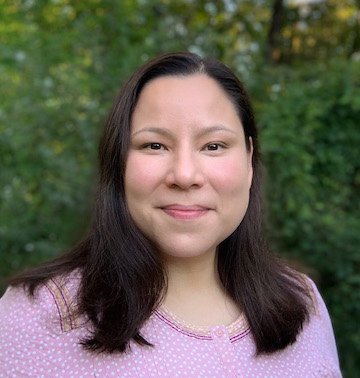Karin Lin-Greenberg’s first novel, You Are Here (288 pages; Counterpoint Press), tells the story of how five lives intersect within a suburban mall that is about to shut down. The characters are seemingly unrelated in their identities and experiences, ranging from Ro—an old woman whose regrets make her bitter—to Jackson, a young boy with aspirations of becoming a magician. Greenberg not only employs a strong sense of place to connect their experiences but uses the common thread of struggling with one’s dreams and reality. Embracing everyday aspects of life, the book provides a blueprint on how community can be fostered in unconventional ways.
Greenberg is the author of two award-winning short story collections—Faulty Predictions (2014) and Vanished (2021)—as well as the recipient of the Pushcart Prize for her story “Housekeeping.” She teaches in the English department at Siena College and the low-residency MFA at Carlow University. Conducted over Zoom, this interview has been edited for clarity and length.
ZYZZYVA: The characters in this book are profoundly relatable and three-dimensional. How did you approach creating them and evoking this sense of fullness?
KARIN LIN-GREENBERG: I’m really interested in characters, probably more than the plot. I want to figure out why characters are the way they are, what has shaped them, and what makes them act in certain ways. When her neighbors look at Ro, they only see her as this racist old woman. To me, she is that but also many more things, so being able to get into her head let me paint a more complex portrait of her. It was important to me that my characters were rounded because nobody is solely good or bad.
Z: While You Are Here is a novel, each chapter focuses on a certain character’s POV and can be interpreted as a fragmented story. How did you arrive at this structure?
KLG: The first chapter of this book was published as a stand-alone short story in the Chicago Tribune, but after that I started thinking about whether I could further develop these characters. I love being part of the short story world, but also had this instinct that more people would read my work if it was in novel form. Readers are often more interested in reading novels than stories, and while it’s amazing to have readers anywhere, my short story collections haven’t reached as many readers as this novel has.
Z: Place feels particularly poignant in your book. Where did the idea for setting the novel in a suburban mall come from?
KLG: After I’ve depicted a place in a story, I often feel ready to move on, but this was the first time I felt there was so much more to work with. A mall is one of the few places in our contemporary society where all sorts of people are going to converge, people of different ages, backgrounds, and jobs. I thought that there was so much in this specific place I could build on, including the fact that it’s very ordinary. Every day, there are interesting things that are happening, and they don’t have to be extraordinary to be interesting.
Z: Though readers are aware of the mall’s closing from the beginning, they still feel suspense and uncertainty. Each chapter progresses chronologically by month but draws from the past and future to deviate from a traditional narrative. Could you talk about that?
KLG: Once I figured out I wanted to keep going with that first story, I decided to set up a structure for myself with multiple narrators. I made a list of all the different people who would interact with the mall and finally came up with these five characters. I wanted there to be ten chapters in the span of ten months, leading up to the mall’s closing. While writing these stories, I was thinking a lot about Olive Kitteridge and Olive Again, by Elizabeth Strout, and how those circled around a particular place, which was a small town in Maine. Upon reading my book, people have mentioned other novels like The Women of Brewster Place and The Girls’ Guide to Hunting and Fishing that also have echoes of the looseness of this form.
Z: This quote reminds me of a common theme in the book: “Ro stands in her doorway and desperately wishes she had a portal she could step through and be transported to a place where she could be someone different.” Ro and other characters consistently exist in the gap between who they are and who they want to be. Why were you interested in writing about this relationship between one’s reality and dreams?
KLG: Everyone wants more from their lives, which is what this book is about. Even if you were in a position that is enviable, you could be dreaming of wanting to do things differently. I specifically wanted to explore this tendency in different ways. Ro is a sad character because she represents regret, but Kevin is someone who is living in a lot of uncertainty and grappling with all his possible paths. Younger characters like Jackson and Maria symbolize hope, while Tina represents practicality over passion. I wanted to think about this idea of not being who you want to be but creating different reasons for each character.

